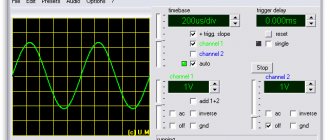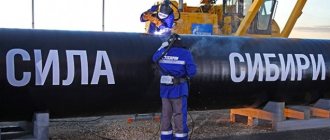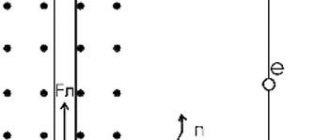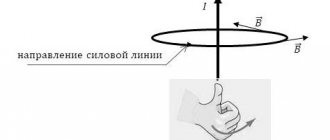Prologue
I express my gratitude to Sergei Sokolov for his help in purchasing pyromodules!
In connection with an attempt to switch from instant coffee to a natural product - coffee beans, I decided to modernize the EK-0.3 electric coffee maker.
The fact is that this antediluvian model of coffee maker did not know how to automatically turn off at the end of preparing an aromatic drink. And, remembering several electric kettles that had exploded without the same automation, I assumed that the life of this coffee maker would also be short-lived if no measures were taken.
At first I wanted to limit myself to a thermal switch that could turn off the coffee maker when the body temperature exceeded 110-120 ° C or, more simply, when the tank was dehydrated. But, this would lead to excessive energy consumption and overheating of the coffee maker body. So, I decided to use a motion sensor that would track the moment when coffee starts pouring into the coffee pot.
I must note that I really liked the experiments with pyromodules, and one of my future projects will be devoted to an anti-vandal motion sensor, which I am going to install on the staircase.
Connection.
ATTENTION! All work on installing a motion sensor to turn on the lighting should be carried out with the 220V voltage turned off.
.
Everything is simple here too. As a rule, the sensor comes with standard instructions for its installation, connection and configuration. First, a schematic diagram of connecting the ceiling and wall motion sensors:
Phase L
wire (1), and zero
N
wire (2) supply 220V power to the motion sensor. The phase comes out of the sensor with wire (3) and comes to one end of the incandescent lamp. The second end of the lamp is connected to the neutral wire. The relay contact is shown conditionally to make it easier to understand the principle of operation of the sensor.
When movement appears in the controlled area, the sensor is triggered, the relay contact closes, and the phase is supplied by wire (3) to the lamp. The lamp turns on.
Here it must also be said that it is advisable to connect the phase wire exactly as shown in the circuit diagram that comes with the instructions. You can read how to determine the phase wire here.
What is a pyromodule or PIR (motion) Sensor?
The abbreviation PIR or PIR stands for Passive Infra-Red or Passive Infrared.
A pyromodule, or PIR-sensor, is a device that converts changes in the intensity of infrared radiation into electric current. The operation of the pyromodule is based on the pyrostatic effect, which occurs in some crystalline materials when the temperature changes. A change in the temperature of the sensor can be caused by infrared radiation.
Since the change in the electric field of crystalline dielectrics is compensated by the field of free electric charges, the field can be recorded only when it changes. This remarkable property of sensors built on the basis of pyroelectrics allows one to track minute changes in radiation intensity that occur over relatively short periods of time, while the smoothly changing temperature of the pyroelectric module itself does not affect the measurement results.
To protect against interference and other harmful influences, the pyro-sensor is enclosed in a sealed metal case, which is equipped with a window. The window is covered with an infrared notch filter that transmits light in a narrow range of radiation, the spectral characteristic hump of which is in the region of 10 μm (1 * 104 nm). The picture shows pyromodules: the Soviet “PM-4” and the imported “D203S”.
In imported pyro modules, behind the infrared filter there is not only the pyro sensor itself, but also an amplifier based on a low-noise unipolar (field-effect) transistor. The picture shows the connection diagram and pinout of the foreign-made pyromodule “PIR D203S”.
To connect Soviet-made pyromodules, a field-effect transistor had to be installed additionally. The picture shows the connection diagram and pinout of the Soviet-made PM-4 pyromodule.
Once upon a time, pyromodules were a secret development of the military-industrial complex and were installed in TGS Thermal Homing Heads (Heatseeker) of missiles and other combat devices.
But now pyromodules are widely used in civilian technology. They are mainly used as motion detectors in alarm and lighting control systems. The picture shows one of these Feron LX20/SEN5 sensors, designed to control lighting.
Ceiling sensors.
For models of ceiling sensors, the protected zone is 360 degrees and is made in the form of a cone with a divergence angle of up to 120 degrees. Thus, a multi-beam barrier is created, when crossed, for example, by a person or animal, the sensor detects a violation and goes into alarm mode.
As a rule, ceiling sensors, depending on the model, are installed at a height of 2.5 - 3 meters from the floor. At the same time, the protected zone in the lower part is from 10 to 20 meters in diameter.
They are best installed in small rooms where you need to monitor all four sides at the same time, and where installing a wall sensor will not be effective.
Construction and details
All design parts, except for the temperature sensor, are assembled on a printed circuit board measuring 45x85mm.
Printed circuit board of the coffee maker control unit assembly.
The temperature sensor is made on the basis of a germanium diode, which is inserted into a mount made of tin from a tin can.
The temperature sensor is fixed to the body of the coffee maker using silicone sealant. A small drop of KPT-8 thermal paste is applied between the tin bracket and the body. The sensor is connected using an MGTF wire in fluoroplastic insulation.
All the plumbing work came down to drilling just two holes in the coffee maker stand.
Two power wires, one load control wire and two temperature sensor wires were laid through these holes. As you can see, the maintainability of the control unit is ensured.
To protect the pyromodule eye, I used a polypropylene plate, which I cut from the piston of a disposable syringe.
Interestingly, the narrow spectrum of infrared radiation in which the pyromodule operates is blocked by ordinary glass and plexiglass, although it is transmitted by many types of plastics, including nylon (polyethylene), polypropylene, etc.
Here's how it works. Video in HD resolution (1280x720px).
Wall sensors.
Wall sensors have a wider range of applications. They are installed both indoors and outdoors. They, like the ceiling ones, create a multi-beam barrier, upon crossing which the sensor goes into alarm mode and closes the electrical circuit with its relay contact.
The installation height must be selected within 2 – 2.5 m.
Purpose and principle of operation of the IEK infrared DD
Motion sensors are designed to detect the movement of objects in a protected space and turn on various equipment: alarms, video equipment, lighting, etc.
The device reacts to moving objects in the viewing area. The sensor records the infrared (IR) background of the controlled space. If the IR radiation field is static, the device is in standby mode. If a person appears, the photocell reacts to changes in the level of IR radiation and turns on the relay. It, in turn, closes the power contacts of the security system or turns on the lighting devices.
The basis of the DD design is a pyro-receiver and a multi-lens. A pyroelectric device is a thin plate of crystalline dielectric into the structure of which conductors are soldered. A multilens consists of many microscopic lenses. They focus IR light on one of the electrodes. With the appearance of an object, the focus changes, which causes a change in voltage in the conductors, and a relay response signal appears.
Why Sen?
Sen keeps getting caught on television cameras. Popular repair programs film their programs using Feron products as ideally meeting the price-quality requirements. Their products are used both in the renovation of budget apartments and in the creation of rich celebrity choirs.
So why is Sen so popular?
The main selection criteria are:
- a huge range of models allows you to choose a unique device for any need;
- constant and careful monitoring of the production of devices ensures that Feron products will have the declared qualities and will have a long service life;
- production is located in Russia, in modern technological factories that reduce any costs and unnecessary expenses during production, this directly contributes to reducing the price of the final product;
- For all motion detectors, the manufacturer is able to offer its electronic devices pre-configured with each other.
In addition to everything, Feron devices have the necessary capabilities for flexible configuration. Since the main purpose of most devices is to work with lighting, they can adjust the brightness of the lighting, the delay before turning off, and more. Thanks to these regulators, each person has the opportunity to adjust the work to their needs.
Feron's arsenal of decorative and sophisticated lamps can set the tone for any interior or become a wonderful addition to an existing style.
YouTube responded with an error: The provided API key has an IP address restriction. The originating IP address of the call (87.236.20.136) violates this restriction.
Source
Technical characteristics of IEK infrared sensors
Technical parameters are contained in DD 008 operating instructions. The situation is the same with motion alarms DD 009 and DD 010. All data on these devices is listed in the table below.
Specifications table
| Options | DD 008, 009, 010 |
| Nutrition | 230 V |
| Current frequency | 50 Hz |
| Power | 0.45 W |
| Exposure time | 10 sec. - 5 minutes. |
| Photosensitivity | From 5 suites |
| Working temperature | -250С-+450С |
| Range of viewing area | 8-12 meters |
| Life time | 7 years |
The models differ in size and design.
Important! The number in the marking indicates the effective viewing range of the device. So, for example, the DD 009 motion sensor has an effective distance from the moving object being detected is 9 meters. DD 008 has 8 meters. The overall figure is 12 meters - this is the maximum response distance of all models of IEC sensors.










